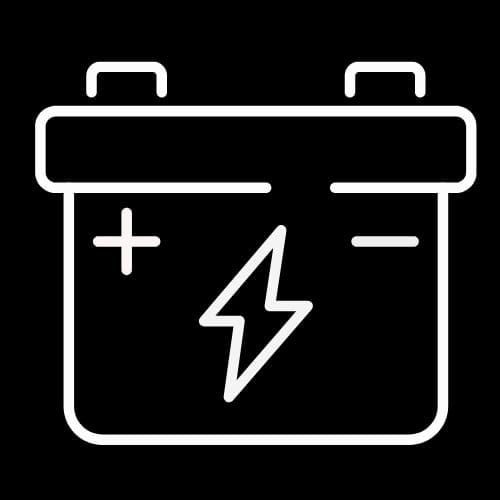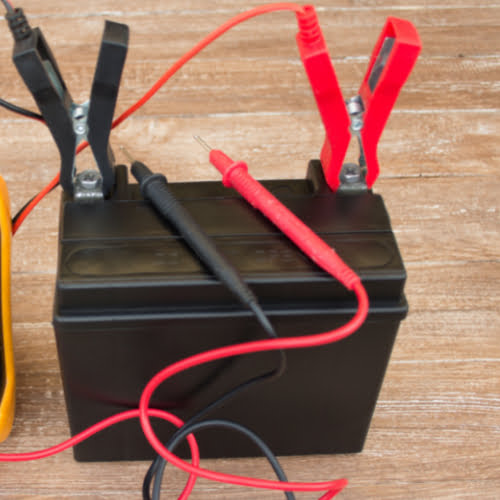Electric golf carts have become ubiquitous on golf courses and in many residential communities. Their quiet operation and zero emissions make them a popular alternative to gas-powered carts. At the heart of every electric golf cart are its deep-cycle batteries which provide power and allow the mobility we associate with these vehicles.
To keep golf cart batteries performing at optimal levels, proper charging and maintenance are essential. There are key factors that determine how frequently golf cart batteries need to be charged to prolong their lifespan.
In this article, we will explore the best way to keep your cart batteries good for a longer period; we will also go through what affects the lifespan of golf cart batteries to help you take good care of yours.
Let’s get started.
- 1) How Often Should Golf Course Carts Be Charged?
- 2) How Often Should Personal Golf Cart Batteries Be Charged?
- 3) What are the Benefits of Regular Charging?
- 4) Proper Maintenance and Battery Life
- 5) Charging Frequency Recommendations
- 6) Charging Tips for Lithium Batteries in Golf Carts
-
7)
Frequently Asked Questions
- 7.1) How long does an electric golf cart battery last?
- 7.2) Should you charge golf cart batteries after every use?
- 7.3) How long does it take to recharge a golf cart battery?
- 7.4) Can you overcharge golf cart batteries?
- 7.5) Do golf cart batteries need to be maintained?
- 7.6) How can I get the most life from my golf cart batteries?
- 7.7) What causes golf cart batteries to die prematurely?
- 8) Final Thoughts
How Often Should Golf Course Carts Be Charged?

For golf carts used at courses and rented out to players, daily charging is standard practice. These carts are workhorses, being driven for hours each day by different golfers across 18-hole courses.
An average round of golf takes 4-5 hours to complete depending on pace of play, course layout, and other factors. Most golf carts at courses will go through multiple rounds per day, racking up significant driving time.
To keep these carts running smoothly all day long, course maintenance crews will plug them in to charge every night. Many courses have centralized charging facilities to efficiently recharge an entire fleet overnight.
Some courses will also offer in-round charging at the 9th or 10th hole, allowing golf cart batteries a mid-day boost if needed. However, most carts are designed to complete 18 holes on a single charge.
Between rounds, any carts not in use can be charged as well, ensuring they are topped off for the next group of golfers. Proper rotation and charging of the full fleet is key.
With regular overnight charging, golf course carts can operate day in and day out for years, only needing battery replacement every 3-5 years. For heavy commercial use, there is no substitute for daily charging of golf cart batteries.
How Often Should Personal Golf Cart Batteries Be Charged?
For privately owned and operated golf carts, proper charging habits are just as important as they are for institutionally owned carts. Personal golf carts should be fully charged after every use, regardless of the duration of use that day.

The required charging frequency can vary based on several factors:
- Duration of use – Longer trips and extended driving times will drain more battery capacity and require longer recharge times. Short trips of just a few miles may allow for occasional partial recharges.
- Terrain and hills – Driving a golf cart up steep hills or slopes will consume more power and discharge the batteries faster. Such conditions require more frequent charging.
- Passenger and cargo load – Heavier passenger and cargo loads put additional current draw on the batteries, necessitating more regular charging.
- Climate conditions – In very hot weather, batteries will discharge faster and need more frequent charging. Cold weather reduces capacity unless batteries are stored properly.
For golf carts used as short-distance vehicles and for commuting purposes, a full recharge should be performed about every 4 hours of drive time. Partial intermittent charges can prolong running time as needed.
To maximize the lifespan of golf cart batteries, it’s important to recharge them fully and avoid excessive discharging past 80%. For personal golf cart owners, making it a habit to plug in and charge their cart after each use is the best practice. You can learn more about diagnosing the health of your golf cart battery to ensure optimal performance and longevity.
What are the Benefits of Regular Charging?
For the deep cycle lead acid batteries used in most electric golf carts, regular and frequent charging provides important benefits for performance and longevity.
- Lead-acid batteries are designed for repeated shallow discharges and frequent recharges. This regular cycling maintains the battery plates in optimal condition.
- Fully recharging after each use prevents the buildup of sulfation on the battery plates which can reduce capacity.
- Consistent overnight charging ensures the batteries are topped off and ready to provide full range day after day.
- Using the OEM original charger or an equivalent modern charger will provide the proper charging algorithm for the batteries. Avoid under or overcharging.
- For carts used year-round, charging in cold weather is vital to prevent freezing and reduced charge acceptance.
- The only exception is for prolonged storage, when batteries only need a refresh charge every 45-60 days to maintain health.
There are no advantages to less frequent charging. In fact, infrequent charging can significantly shorten the lifespan of golf cart batteries. Regular full charges keep the plates conditioned and prevent deterioration during downtime.

For maximum performance and longevity of electric golf cart batteries, there is simply no substitute for proper and frequent charging habits.
Proper Maintenance and Battery Life
To maximize the lifespan of your golf cart batteries, proper maintenance is just as important as regular charging. Here are some key maintenance steps:
- Cleaning the battery terminals – Dirt and corrosion on the terminals can impede current flow. Use a wire brush and baking soda solution to clean them.
- Checking water levels – Open wet cell batteries need occasional water top-offs. Use distilled water after charging.
- Monitoring charge cycles – Track rounds played and charging frequency, and watch for capacity loss over time.
- Proper storage – Batteries self-discharge faster in hot weather. Store them in a cool place. Charge every 45-60 days (when just stored and not used frequently).
- Avoid overcharging – Use an appropriate charger. Don’t leave on trickle charge indefinitely.
- Prevent excessive discharge – Don’t run the batteries completely dead. Recharge before 80% discharge.
- Record individual battery voltages – Identify weakening batteries by regularly checking each battery’s voltage after charging.
With proper care and maintenance, sealed lead-acid golf cart batteries typically last from 3000-5000 charge cycles. That translates to 4-8 years of lifespan under normal use conditions. Golf cart batteries are an investment, and proper maintenance habits can considerably extend the battery life. Consistent care and frequent charging give you the best performance and longevity.
Looking to upgrade or replace your cart batteries? exploring options from our guide to the best golf cart batteries can provide reliable, long-lasting performance to enhance your golfing experience.
Charging Frequency Recommendations
Based on all the previous factors discussed, here are the key recommendations for golf cart battery charging frequency:
- Charge your golf cart batteries after every single use, no matter how short. There is no benefit to less frequent charging.
- For maximum battery lifespan, aim to charge as often as possible. The more regular charges, the better.
- Daily charging is ideal for both golf course and personal carts that are used on a regular basis.
- Use the original OEM charger designed for your batteries, or an equivalent modern and properly rated charger. Avoid mismatches.
- In cold climates, pay special attention to charging before storage and during the winter season. Don’t allow freezing.
- Avoid overcharging and excessive discharge cycles that strain the batteries.
- Charge early and charge often! Regular full charging maintains the batteries and prevents deterioration.
Adhering to these best practices for charging frequency will ensure your golf cart batteries deliver consistent performance day after day and retain optimum capacity. The convenience and freedom of electric golf carts depend directly on proper battery maintenance and charging habits. Treat your batteries well and they will provide many years of reliable service.
Charging Tips for Lithium Batteries in Golf Carts

Lithium-ion batteries are increasingly being used in newer electric golf cart models instead of traditional lead-acid batteries. Lithium batteries have advantages like:
- Lighter weight – lithium batteries weigh less than half as much as equivalent lead acid batteries. This improves golf cart performance and reduces load.
- Faster charging time – a lithium golf cart battery can recharge in 4 hours or less, whereas lead acid needs 6-12 hours.
- Increased energy density and range – lithium batteries store more energy per pound, providing more holes/miles per charge.
- Longer lifespan – properly maintained lithium batteries can last up to 10 years compared to 3-5 years for lead acid.
However, lithium batteries have different charging needs than lead acid. Here are some lithium golf cart charging tips:
- Use only a lithium-compatible charger – do not use a standard lead acid golf cart charger, as it can overcharge lithium batteries.
- No need to fully deplete before charging – lithium does not have “memory effect” so partial recharging is fine.
- Avoid leaving lithium batteries near empty – store around 50% charge for optimal health.
- Charge after each use is still good – lithium does not need to be charged as often but regular charges prolong life.
- For regular use, charge 2-3 times per week – Charging does not have to be daily like lead acid.
- Do not leave depleted for weeks/months – recharge partially if the battery is stored for long periods.
Following the proper charging regimen maximizes lithium battery performance and lifespan. Check your golf cart manufacturer’s recommendations for charging lithium battery banks.
Frequently Asked Questions
In this section of the article, we will be answering some frequently asked questions related to golf cart batteries to ensure you are well-equipped to take good care of your battery.
How long does an electric golf cart battery last?
With proper maintenance, deep-cycle lead acid batteries for golf carts typically last 4-8 years. Golf course carts are on the lower end, and personal carts are on the higher end of the lifespan.
Should you charge golf cart batteries after every use?
Yes, it is recommended to charge golf cart batteries after every use, no matter how brief, for optimal longevity. Frequent charging is best.
How long does it take to recharge a golf cart battery?
Most original golf cart chargers will fully recharge drained batteries overnight, around 8-10 hours. Larger battery banks may take longer.
Modern lithium batteries, on the other hand, can be fully recharged in around 3 hours.
Can you overcharge golf cart batteries?
Yes, it is possible to overcharge and damage batteries by leaving them on trickle charge indefinitely or using the wrong charger. Use an appropriate OEM or equivalent modern charger.
Do golf cart batteries need to be maintained?
Yes, proper maintenance like cleaning terminals, checking water levels, monitoring health, and proper storage extends battery lifespan.
Still, lithium batteries require minimal maintenance compared to lead acid.
How can I get the most life from my golf cart batteries?
The best practices to extend your battery life include the following:
Frequent full charging, proper maintenance, using the right charger, avoiding excessive discharge, and storage away from extreme cold and heat.
What causes golf cart batteries to die prematurely?
Infrequent charging, allowing full discharges, improper maintenance, improper storage, overcharging, and exposure to temperature extremes can all cause your golf cart batteries to die prematurely.
Final Thoughts
Proper golf cart battery charging frequency is crucial for maintaining performance and extending battery lifespan.
While exact charging needs vary based on use patterns, climate, and other factors, the general rule holds – more frequent charging is better for the long-term health of golf cart batteries.
Check Also: 10 Best Electric Golf Caddies With Remote Control
Making battery charging and maintenance a regular habit, and investing in quality deep-cycle batteries, will all maximize the lifespan of your golf cart’s battery banks and ensure reliable performance for years of driving enjoyment.
If you have any questions or comments, feel free to contact us.
Thanks for reading!





